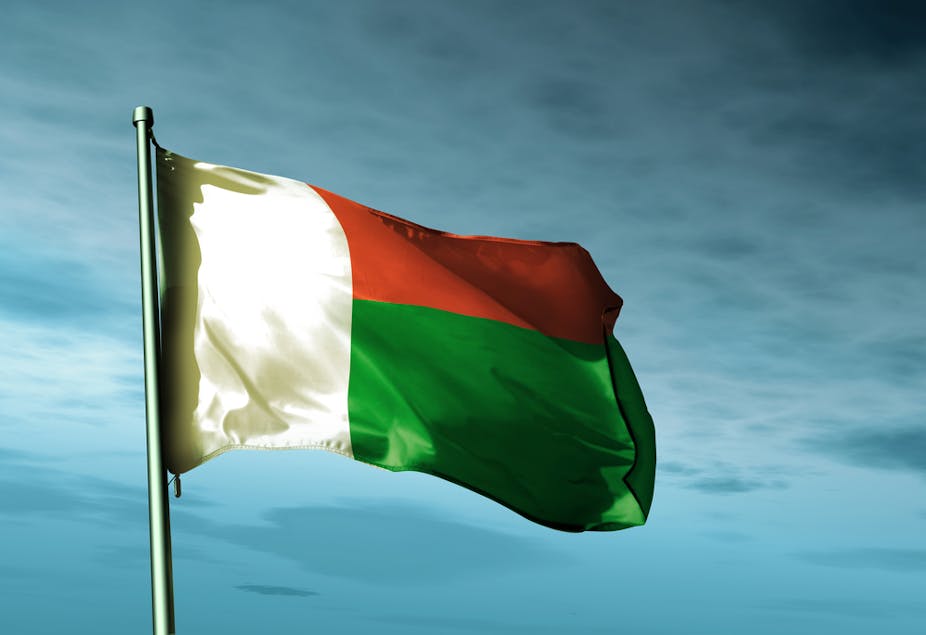Madagascar is gearing up for presidential elections in November this year. The Conversation Africa spoke to Adrien Ratsimbaharison about how the elections might unfold and what challenges Madagascar’s new president will face.
How many presidents has Madagascar had since the coup in 2009 and have these transitions been peaceful?
Since independence in 1960, Madagascar has experienced a handful of political crises. Most presidential elections have been rigged by the incumbent and rejected by the opposition. The most disputed election was in 2001 when Marc Ravalomanana ran against the long-time dictatorial president, Didier Ratsiraka, and won. The post-electoral conflict between the two men quickly escalated to a tense political crisis and a low-level civil war in early 2002.
Since Ravalomanana was controversially removed from office in 2009 the country has had two presidents. While many considered it a coup, he himself signed the ordinance of his resignation and the “coup” leader —- opposition figure Andry Rajeolina —- was allowed to stay in power and negotiate a peace agreement.
A series of peace negotiations between the major political parties were held over the next couple of years to prevent escalating unrest.
Rajoelina led the country until the next presidential election four years later. Neither Ravalomanana nor Rajoelina were allowed to run, but one of Rajoelina’s allies, Hery Rajaonarimampianina, was democratically elected. This political transition was peaceful, even though Rajoelina kept pushing back the election dates and despite staunch opposition by supporters of Marc Ravalomanana.
Rajonarimampianina’s first term in office was a rocky one, but generally peaceful. During his tenure, there were two attempts to have him impeached and he fell out with Rajoelina.
What are the prospects for peaceful elections?
Many observers fear that the next presidential election will be accompanied, if not followed, by violence. Mainly because the former three leaders —- Ravalomanana, Rajoelina and Rajaonarimampianina —- are the main contenders.
The stakes are really high for all three.
Rajaonarimampianina’s government has tried to engineer some controversial electoral laws over the last two years. But these backfired and he was almost impeached.
In fact, the latest impeachment attempt led to the High Constitutional Court’s decision that an election must take place in November.
Nevertheless, I believe that following years of political fatigue, the general will is to have free, fair and peaceful elections.
Who are the other candidates in the upcoming elections?
There are 36 candidates running for president in this years’ elections. This number is about the same as the last presidential election five years ago, but a lot more than previous presidential elections.
But the main contenders come down to Ravalomanana, Rajoelina and Rajaonarimampianina —- the only candidates who can mobilise significant financial and human resources to win. The other candidates really don’t stand a chance. They include former President Didier Ratsiraka, former prime ministers, university professors, business people, lawyers and artists.
Some of these candidates will just run for the fame of being a former presidential candidate —- a title they will always have. Others will also run in the hope that they could demonstrate popular support and negotiate a position in future governments.
What are the challenges Madagascar’s new president will face?
The newly elected president will have a huge job on his shoulders. The main challenges include public safety, job creation and raising more money for the government budget.
Over the last few years, there’s been a rise in violence and violent acts. In urban areas the number of armed robberies and kidnappings – particularly of Indian and Pakistani business people – has increased. Between 2010 and 2017 there were more than 100 kidnappings, and these are on the rise with 15 taking place last year alone.
In rural areas, the number of attacks by cattle raiders and other bandits has also increased. Hundreds of people die and thousands of cattle are stolen every year in the country.
Though most complain about this increasing insecurity, the government has not been able to mitigate it. This is because it’s caused by poverty and high unemployment levels.
Largely owing to the political instability that Madagascar has experienced, it is now ranked among the five poorest countries in the world, with a population of 25 million and a gross national income per capita of USD$400.
It has a dysfunctional economy. The industrial sector is very weak, contributing on 16% to GDP. The bulk of the population – more than 80% – live in rural areas but only contribute to 26% of the GDP.
The service sector is deceptively large (with 58% of the GDP), but much of it is in the informal sector. The majority of people are poor – 70% live on less than $1.90 a day. Officially, the unemployment rate is low (1.8%), but this doesn’t take into account the insecurity of the informal economy and underemployment in the rural areas.
A major challenge for the new president will be to create jobs, especially in the industrial and service sectors.
Finally, Madagascar relies on a great deal of foreign aid to function, particularly when it comes to health care and education. According to some reports, foreign aid accounts for up to 70% of its annual budget. Consequently, the future president must be able to raise funds from the private sector of the economy through different schemes such as special economic zones to attract foreign investment.

